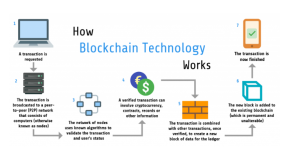
Disaster recovery planning is a crucial step for any organization, regardless of its size or industry. It involves creating a detailed strategy and set of procedures to deal with potential disasters that may hinder normal business operations. These disasters can range from natural events like earthquakes, floods, or hurricanes to human-induced incidents such as cyberattacks or system failures.
Importance of Disaster Recovery Planning
Having a comprehensive disaster recovery plan is essential for several reasons. First and foremost, it ensures business continuity. Disasters can disrupt operations, leading to downtime and financial losses. A well-prepared plan minimizes the impact of these disruptions and allows the organization to recover quickly.
Another reason why disaster recovery planning is important is to protect the organization’s reputation. Customers and stakeholders rely on the organization’s ability to deliver products or services consistently. If a disaster occurs and the organization does not have a plan in place, it may struggle to meet these expectations, damaging its reputation in the process.
Lastly, disaster recovery planning is also critical for compliance purposes. Many industries have specific regulations and guidelines that require organizations to have disaster recovery plans in place. Non-compliance can result in severe penalties and legal consequences.
Components of a Disaster Recovery Plan
A well-designed disaster recovery plan should include the following components:
1. Risk Assessment
The first step in disaster recovery planning is to conduct a comprehensive risk assessment. This involves identifying potential risks and vulnerabilities that the organization may face. It is crucial to assess both internal and external factors that can impact business operations.
An example of a risk assessment process could include identifying critical systems and assets, evaluating potential threats, and determining the probability and impact of those threats.
2. Business Impact Analysis
After conducting a risk assessment, a business impact analysis (BIA) should be performed. This step helps identify the critical processes and systems within the organization that need to be prioritized during the recovery process.
A BIA typically involves assessing the potential financial and operational impacts of a disaster on the organization. It helps determine the recovery time objectives (RTOs) and recovery point objectives (RPOs) for each critical process or system.
3. Backup and Recovery Procedures
Once the critical processes and systems have been identified, a disaster recovery plan should outline the backup and recovery procedures. This includes defining data backup strategies, storage locations, and recovery techniques.
Organizations should consider implementing off-site backups, utilizing cloud storage, and conducting regular data recovery drills to ensure the effectiveness of the procedures.
4. Communication Plan
A communication plan is a critical component of any disaster recovery plan. It outlines how the organization will communicate with employees, customers, stakeholders, and the media during and after a disaster.
The plan should include contact information, alternative communication channels, and designated spokespeople who will handle external communications. Effective communication helps minimize confusion, maintain transparency, and manage the organization’s image during a crisis.
5. Employee Training and Awareness
Ensuring that employees are well-prepared and aware of their role in the disaster recovery plan is crucial. Regular training sessions should be conducted to familiarize employees with the procedures and protocols in case of an emergency.
Employee awareness campaigns can also be implemented to promote a culture of preparedness and encourage employees to report any potential vulnerabilities or risks they identify.
6. Testing and Maintenance
A disaster recovery plan should not be a one-time creation. Regular testing and maintenance are necessary to ensure its effectiveness. Testing can involve simulated disaster scenarios, where the organization evaluates the plan’s efficiency and identifies areas for improvement.
It is crucial to review and update the disaster recovery plan regularly to keep up with technological advancements, changes in the organization’s infrastructure, or new threats that may emerge.
Conclusion
Disaster recovery planning is an essential process that every organization should undertake to protect its operations, reputation, and compliance with regulations. It involves assessing risks, conducting a business impact analysis, outlining backup procedures, defining communication plans, and ensuring employee preparedness. Regular testing and maintenance are also vital to keep the plan up to date.
By investing time and resources in disaster recovery planning, organizations can mitigate the impact of potential disasters and recover quickly, ensuring business continuity in the face of adversity.

